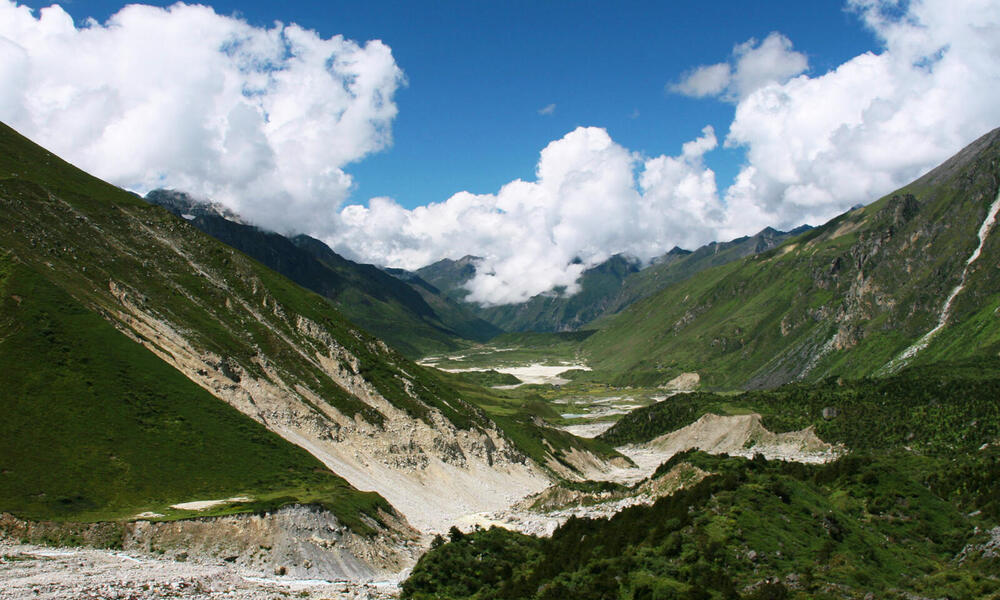Why are Himalayas Mountains So Prominent?
The Himalayas Mountains So Prominent
The Himalayas, often referred to as the “Abode of Snow,” stand as the world’s most prominent and iconic mountain range. Stretching across five countries – India, Nepal, Bhutan, China, and Pakistan – these mighty peaks have captured the imagination of adventurers, geologists, and spiritual seekers for centuries. The prominence of the Himalayas is not merely a geographical wonder but also a result of complex geological and environmental factors. In this blog post, we will delve into the mesmerizing world of the Himalayas, exploring the various aspects that make them so prominent.
The Birth of the Himalayas
To understand why the Himalayas are so prominent, we must first delve into their geological origin. These majestic mountains are relatively young in geological terms, with their formation dating back to approximately 50 million years ago during the Eocene epoch. The primary reason behind the birth of the Himalayas is the collision of two colossal tectonic plates – the Indian Plate and the Eurasian Plate.
Tectonic Plate Collision
The Indian Plate, carrying the Indian subcontinent, has been moving northward at an astonishing rate of about 5 centimeters per year. This relentless northward movement led to a dramatic encounter with the Eurasian Plate, which makes up the vast continental landmass of Asia. When these two titanic plates collided, the result was nothing short of spectacular.
The immense force generated by the collision caused the Earth’s crust to crumple and fold, giving rise to the towering peaks of the Himalayas. The Indian Plate, being denser than the Eurasian Plate, was forced beneath it in a process known as subduction. This phenomenon further contributed to the elevation and prominence of the Himalayas.
Rise to Prominence
The Himalayas’ prominence is a result of several remarkable features and phenomena, each contributing to their awe-inspiring grandeur:
1. Exceptional Height
One of the most conspicuous aspects of the Himalayas is their towering height. Mount Everest, the tallest peak in the world, stands at a staggering 8,848 meters (29,029 feet) above sea level. This extraordinary elevation is due to the ongoing tectonic pressure exerted by the plate collision.
2. Varied Geological Structures
The Himalayas boast a diverse range of geological formations, including dramatic fault lines, rugged terrains, and glaciated valleys. These geological structures have contributed to the region’s uniqueness and prominence.
3. Glacial Sculpting
Glacial activity has significantly shaped the Himalayan landscape. The slow but relentless movement of glaciers has carved out deep valleys and left behind mesmerizing features like moraines, cirques, and U-shaped valleys, enhancing the mountains’ prominence.
4. Ecological Diversity
The Himalayas host an astonishing array of ecosystems and biodiversity due to their varying altitudes and climatic conditions. This ecological diversity, from lush forests to arid plateaus, adds to the mountains’ prominence as a hotspot for wildlife and flora enthusiasts.
5. Spiritual Significance
Beyond their physical attributes, the Himalayas hold profound spiritual significance. They are considered sacred by various religions, including Hinduism and Buddhism. The presence of revered pilgrimage sites and monasteries further enhances the mountains’ prominence in the cultural and spiritual realm.
Impact on Climate
The Himalayas’ prominence extends beyond their immediate physical features. They play a crucial role in influencing the region’s climate and weather patterns. This impact is felt both locally and globally:
1. Monsoon Modulation
The Himalayas act as a natural barrier to the southward progression of the Indian summer monsoon. When moist air from the Indian Ocean encounters the Himalayas, it is forced to rise, cool, and release its moisture as rainfall. This phenomenon is vital for the Indian subcontinent’s agriculture and water resources.
2. Global Climate Influence
The Himalayas also influence global climate patterns. Their immense size and elevation impact atmospheric circulation, affecting weather systems as far away as Europe. Changes in the Himalayan glaciers, driven by global warming, have raised concerns about rising sea levels worldwide.
Challenges and Conservation
While the Himalayas’ prominence is a source of fascination, it also presents challenges and concerns:
1. Glacial Retreat
Global warming has led to the retreat of Himalayan glaciers, which are a vital source of freshwater for millions of people in Asia. This phenomenon could have far-reaching consequences for regional water resources.
2. Natural Hazards
The steep, rugged terrain of the Himalayas makes the region prone to natural hazards, including landslides, avalanches, and earthquakes. Mitigating these risks is an ongoing challenge for the local communities and governments.
3. Biodiversity Conservation
Preserving the rich biodiversity of the Himalayas is a pressing concern. Efforts are underway to establish protected areas and sustainable conservation practices to safeguard this unique ecosystem.
Conclusion
In conclusion, the prominence of the Himalayas is a result of a captivating interplay





